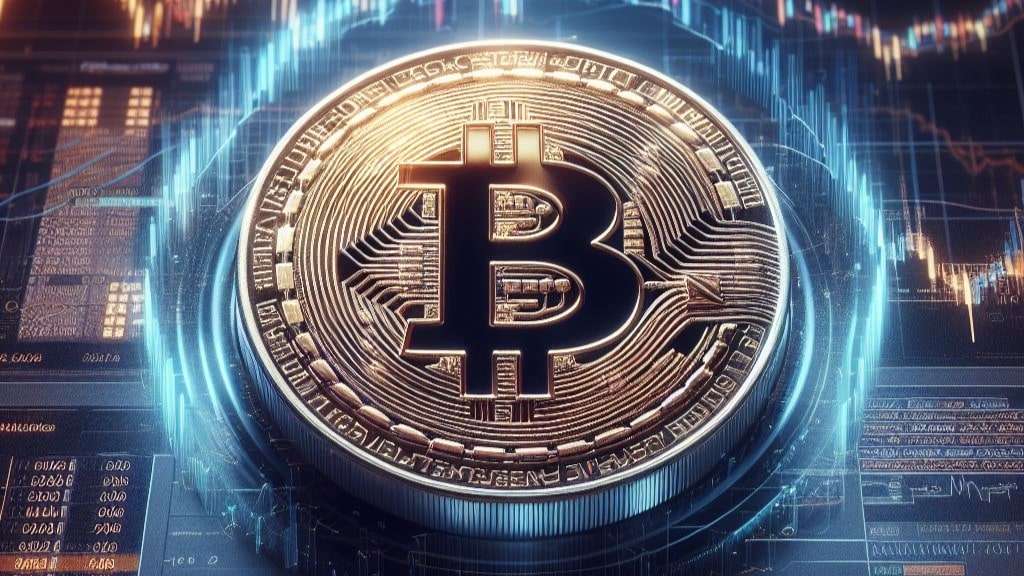
In a rapidly evolving landscape, the world of cryptocurrencies continues to capture the imagination of investors and traders alike. As we delve into the intricate world of Bitcoin, a recent analysis by renowned cryptocurrency analyst Willy Woo has shed light on a fascinating and potentially transformative development – the rising dominance of paper Bitcoin in the cryptocurrency market. This phenomenon has the potential to reshape the very foundations of the crypto realm.
Picture this: an era where the trading of paper Bitcoin, represented by futures contracts, surpasses that of the real, tangible Bitcoin traded daily. It might sound perplexing, but this is precisely the situation we find ourselves in today. According to Woo’s analysis, paper Bitcoin now accounts for a staggering 20-30% more trading volume compared to its liquid counterpart. This shift in dynamics has far-reaching implications that extend beyond the crypto-sphere.
At first glance, it might appear that the increasing dominance of paper Bitcoin is a mere statistical anomaly. However, delving deeper, it becomes evident that this trend carries substantial weight. To grasp its significance, let’s break it down.
Liquid Bitcoin refers to the actual cryptocurrency that can be bought, sold, and transferred on the blockchain. It is the lifeblood of the crypto market, representing the true supply and demand dynamics. In contrast, paper Bitcoin encompasses futures contracts and other derivative instruments tied to the price of Bitcoin. These instruments are essentially bets on the future price movements of the cryptocurrency.
The remarkable aspect of this scenario is that the trading of paper Bitcoin is now outpacing the trading of its liquid counterpart. To put it simply, more people are speculating on the future price of Bitcoin through derivatives than are buying and selling the actual cryptocurrency itself.
One might wonder why this shift matters. Well, it goes beyond the realm of statistics. The implications are profound, touching upon the very essence of cryptocurrencies and their intrinsic value.
In recent months, the crypto market has witnessed a noticeable drop in both liquid and highly liquid Bitcoin supply. Approximately 500,000 Bitcoins have seemingly vanished from circulation. This supply shock should theoretically drive up the value of Bitcoin, as scarcity often leads to increased demand. However, the surge in paper Bitcoin trading appears to be mitigating this potential supply shock.
Interestingly, this development mirrors a situation that has long existed in the world of precious metals, particularly gold. In the gold market, the prevalence of paper or derivatives trading has often been viewed as a vulnerability. This is because it provides a mechanism for influencing and even suppressing the value of gold.
Gold, like Bitcoin, has a finite supply, and its value is influenced by factors such as supply and demand dynamics, economic conditions, and geopolitical events. However, the presence of a robust paper gold market, characterized by futures contracts and other derivative instruments, has allowed for price manipulation and speculative activity that can impact the metal’s true value.
With Bitcoin seemingly following a similar path, this raises questions about the increasing influence of derivative markets on the intrinsic value of cryptocurrencies.
The implications of this trend extend beyond the immediate impact on Bitcoin’s price. The growing dominance of paper Bitcoin could potentially have a domino effect on the entire cryptocurrency market.
As more traders and institutions engage in paper Bitcoin trading, the price discovery mechanism may become skewed. The derivatives market tends to be highly leveraged, which means that a relatively small amount of capital can have a significant impact on price movements. This could lead to increased volatility and price manipulation in the cryptocurrency market.
Furthermore, the influx of paper Bitcoin trading could alter the way investors perceive the cryptocurrency. Instead of being seen as a decentralized digital asset with a finite supply, Bitcoin may increasingly be viewed as a speculative instrument tied to the whims of derivative markets.
Regulators and policymakers are closely monitoring these developments, recognizing the potential risks they pose to market stability. The cryptocurrency market has already faced scrutiny due to concerns about fraud, money laundering, and investor protection. The growing influence of derivative markets on Bitcoin’s value adds another layer of complexity.
There have been calls for greater transparency and oversight of cryptocurrency derivative markets to ensure that they do not unduly influence the price of the underlying asset. Striking a balance between innovation and investor protection is a formidable challenge that regulators are currently grappling with.
In many ways, the rise of paper Bitcoin reflects the evolving nature of the cryptocurrency market. It highlights the maturation of the industry as it moves from the fringes to the mainstream. However, it also underscores the need for market participants to tread carefully and consider the long-term implications of their actions.
The path forward for cryptocurrencies remains uncertain. While the dominance of paper Bitcoin raises concerns, it also presents opportunities for hedging and risk management. Institutional investors, for example, may find value in using derivatives to manage their exposure to the volatile cryptocurrency market.
In the ever-evolving world of cryptocurrencies, the rise of paper Bitcoin represents a pivotal moment. It challenges the traditional notions of supply and demand, price discovery, and the intrinsic value of digital assets. As Bitcoin and other cryptocurrencies continue to gain prominence in the financial world, the influence of derivative markets on their value is a topic that will undoubtedly shape the future of the industry.
The key takeaway here is that the cryptocurrency market is no longer a niche realm dominated by a handful of enthusiasts. It has entered the global stage, attracting a diverse array of participants, from retail traders to institutional investors. As this market continues to evolve, it is imperative that stakeholders, including regulators, market participants, and investors, engage in thoughtful discourse and responsible actions to ensure its long-term stability and integrity.



Get the latest Crypto & Blockchain News in your inbox.